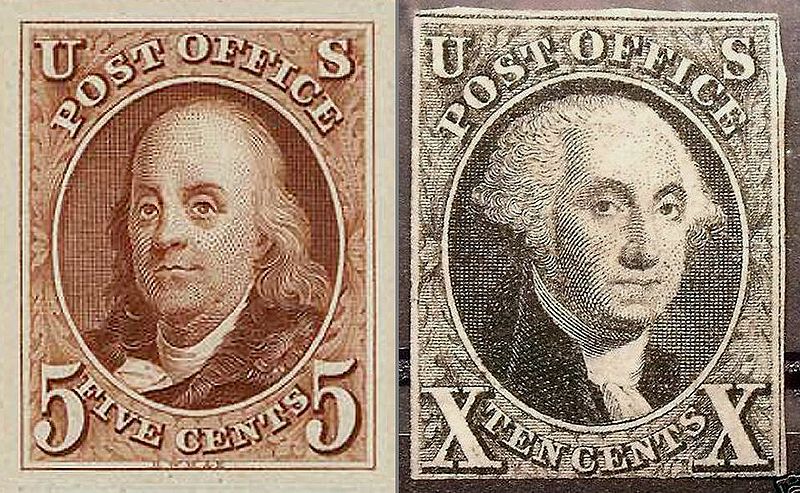The U.S. First Stamps
Two stamps I will probably never own!
The United States issued its first postage stamps on July 1, 1847. The stamps were designed by the artist John Vanderlyn and printed by the firm of Rawdon, Wright, Hatch, and Edson. The stamps were issued in two denominations: a five-cent stamp featuring a portrait of Benjamin Franklin, and a ten-cent stamp featuring a portrait of George Washington.

The stamps were printed in sheets of 200, with each stamp measuring about one inch by three-quarters of an inch. They were printed in black ink on bluish paper, with the words “U.S. Post Office” and the denomination printed in large letters.
The 5-cent stamp was intended for use on letters weighing less than one-half ounce that were sent over a distance of up to 300 miles. The 10-cent stamp was for letters weighing less than one-half ounce that were sent over a distance of more than 300 miles. These first stamps were used primarily for the transportation of letters and documents, which was a crucial means of communication and commerce in the mid-19th century.
The design of the stamps was simple and elegant, with the portraits of Franklin and Washington surrounded by decorative lettering and border. The stamps were an instant success, with people eager to use these new symbols of national identity and efficiency.
Over the years, the United States has issued many more stamps with a wide variety of designs and themes, from famous Americans and national landmarks to pop culture icons and historical events. But the first stamps remain an important milestone in the history of American postal service and a reminder of the power of a small piece of paper to connect people across vast distances.


